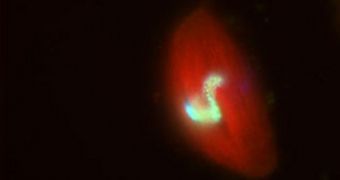As they kept studying the natural world, it became clear to evolutionary biologists that Mother Nature tended to place the most resources a species had into evolution and reproduction. This is seen by the tremendous amounts of efforts some mating rituals demand of the males in certain species, as well as at a genetic level, by the amount of effort cells put into ensuring that accurate copies of themselves are generated for future generations. Experts have now discovered a new molecule that plays an important part in the latter, PhysOrg reports.
What the research team essentially found was another piece of the mysterious mechanism that ensured the material passed from one generation to the other suffered little to no mutations. Scientists at The Rockefeller University write in the latest issue of the Journal of Biological Chemistry that the molecule SMARCAL1 plays an important role in the way cells respond to malfunctioning DNA replication. The latter is one of the main causes why mutations occur. Not all mutations are bad. In fact, some of them allow for organisms to be more adapted to their environments. But some mutations can lead to lethal diseases, which can destroy an organism very fast.
As DNA translates, and separates into new structures, there is a complex system that “proof reads” the order of the sequences, so as to ensure that the most accurate replication process possible has taken place. When large errors are discovered in the DNA-replication sequence, other molecules stop it, and start conducting repairs, so as to ensure the most faithful reproduction possible. The new molecule is especially drawn to a DNA repair problem with potentially serious consequences, known as a double-strand break. It combines its efforts with RPA, a molecule already known to coat damaged DNA strands as repairs are being conducted.
SMARCAL1 was identified using mass spectroscopy, by RU postdoctoral fellow Lisa Postow, who was at the time working in professor Hironori Funabiki’s Laboratory of Chromosome and Cell Biology, at the university. Her work was proven by four back-to-back scientific papers, published earlier this year in the respected scientific journal Genes & Development. “This study […] proves that the proteomic approach that Lisa has developed […] can efficiently identify proteins involving the DNA-damage recognition and repair process. Many more excitements are ahead of us,” Funabiki says.

 14 DAY TRIAL //
14 DAY TRIAL //